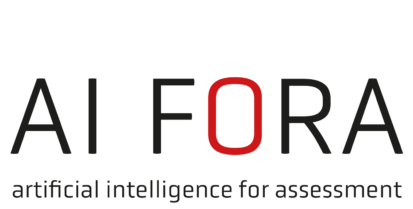Purpose and general design
Worldwide, problems and pressures in social service provision are profound due to scarce public resources, economic and financial crises, and inequalities of life chances in different countries, which leads to ringfencing social security systems against undeserving recipients, and which puts selection pressures on systems for identifying the deserving. Therefore, social services can be seen as provisions that respond to vital human needs, on the one, hand counteracting discriminatory practices thus creating equal opportunities; however, the selection mechanisms deciding on how and to whom exactly these services are provided and distributed, can be considered as highly discriminatory themselves among potential recipients. This makes the practice of social service provision at the same time anti-discriminatory and discriminatory with a variable trade-off between these two.
On the discriminatory side, service recipients must fulfill certain criteria not to be excluded but to be considered as beneficiaries. Criteria sets, however, are highly contingent across the globe. Discriminatory practices to distinguish beneficiaries from non-beneficiaries crucially depend on beliefs, norms and values in place as reference frameworks for public resource distribution in different societal contexts.
Bias due to value judgements concerning fair distribution is prevalent in every selection system, because they all work with inclusion/exclusion dichotomies, which are subject to cultural interpretation, social change and multi-actor negotiation.
In many countries, AI, or at least data analytics methods, are in place to support these selections partly already deciding on provision or refusal of services for applying individuals.
The AI FORA case studies look at social assessment practices in six countries with different value reference frameworks investigating the context-dependent service provision selectivity of welfare systems in order to analyse the requirements, constraints, and consequences of AI use supporting or replacing conventional practices.
As a guiding principle, AI use must at least be considered from a research perspective or intended by practitioners, but does not need to be already realized or implemented.
Each case study country is represented by an interdisciplinary team mirroring the general partner approach in AI FORA: an IT institution researching and/or developing AI technologies for social assessment in the country’s welfare system will team up with a social science partner institution investigating the cultural and socio-ethical axion base of value and belief systems underlying social assessment for public welfare provision with related sociological dynamics of actors and networks in that country. Interdisciplinary case study coordination and multi-stakeholder workshops with specifically-developed interactive and participative formats will be organized at local intermediaries, i.e. network organisations specialized in interreligious, intercultural and inter-societal communication within and between societies. Those organisations will provide “safe spaces” for supporting dialogue between parties with conflicting interests, uneven resource and power distributions.
Framework
Running for the first 24 months of the project duration, AI FORA’s country case studies look at data analytics /AI use for public service provisions in national welfare systems (public service provisions: state contributions for improving living conditions and welfare of national citizens “from cradle to grave”). The general research objective is to describe and analyse the technological and social field dynamics of the chosen domain.
Case study research follows a dedicated approach and study design for answering the two basic AI FORA research questions:
- How were social assessment routines for distributing social services conceptualised, organised and institutionalised prior to any AI use,
- which societal norms and values were used as reference for these social assessment routines,
- which organisational practices and routines were/are in place,
- and which policies or institutional infrastructures supported these context-specific social assessment practices?
- How and up to which degree have conventional social assessment processes in different international societies been replaced or changed by AI,
- where do non-AI and AI processes differ, especially with regard to implemented social assessment values,
- and how do societal stakeholders, policy, public discourse and institutional infrastructures respond?
To address, these research questions, AI FORA`s case studies rely on a mixed-methods approach. For the research design of case studies, this reflects in two ways:
Overall: Mixed application of methods from social science and from technical sciences
Within social science: Mixed application of quantitative and qualitative methods
For technical science, this means:
- Desk research to explore the current technological state of the art in the chosen domain and its development with reference to international benchmarking
- Desk research to explore databases and systems in place
- Prototyping a toy system imitating the national system in place
- Prototyping an AI social assessment system in cooperation with the social sciences
- Experimentations with both prototypes followed by interdisciplinary assessment
For social science, this means:
- Desk research to explore the current social state of the art in the chosen domain and its development in a comparative perspective
- Desk research to explore and analyse literature and data available
- Empirical social research (in italics mixture of quantitative and qualitative methods)
- Quantitative research to get an overview on the structural components of the social system in the chosen domain (actors, resources, inputs, outputs, processes, performance, stakeholder networks etc.)
- Qualitative research to get some insights into the processes and mechanisms of the social system by researching the behavior and attitudes of relevant actors (incentives, orientations, norms, values, strategies, intentions, barriers, limitations, visions, options etc.)
- Interacting with technical science for prototyping an AI social assessment system according to study results
- Experimentations with prototype followed by interdisciplinary assessment
Expected outputs:
- Socio-technical map of the domain (participatory systems mapping)
- Toy model prototype of the existing technological system
- Toy model prototype of the desired technological system (participatory modelling)
- Input for general AI FORA work packages 2 and 3
- Research publications
